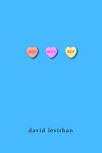Are you sitting down? Because The Tragedy of Arthur by author Arthur Phillips, is a little complicated. It’s a novel, but one that deliberately blurs the line of reality, being narrated by the character of Arthur Phillips, an author of such books as Prague and The Song is You, just like the real life Arthur Phillips.
The novel begins with a preface:
Random House is proud to present this first modern edition of The Tragedy of Arthur by William Shakespeare.
And further suggests
that general readers plunge directly into the play, allowing Shakespeare to speak for himself, at least at first. then, if some background is helpful, look to this very personal Introduction.
Before I began the book, I knew it had to do with a play within a novel and that it was convoluted and intertwined. OK, I thought, after I read the “Preface,” what to do now? Treat it as a novel, and read the “Introduction” of 256 pages, or do what I normally do when approaching a play or classic, read the work first, then backtrack to the introduction to avoid spoilers?
I tried the play first, then a friend told me to have some sense already and just read the novel. Having attempted both, I can attest that reading the “Introduction” first is the way to go.
Arthur Phillips, the narrator and main character (and possibly also the author?) launches into a long family history interspersed with token summaries of the play that follows, purported to be a previously undiscovered work by Shakespeare. As we learn over the course of the tormented, self-aware, memoir-ish “Introduction”, the play–The Tragedy of Arthur, about King Arthur’s short reign–may have been forged by his father, also named Arthur. Got it?
Phillips’ clever novel features many recurring features from Shakespeare: boy/girl twins, a “dark” lady, crossed love, a meddling father, and a remarried mother. Some scenes are laugh-out-loud funny, while others are cringe inducing. The character Arthur tries to negotiate a relationship with his father, Arthur, and their relationship ends up bound with a play about Arthur, as well. The whole can be described by a sentence it contains referring to a project of Arthur’s twin, Dana:
Her complete project was a strange and beautiful hybrid of historical research, literary interpretation, parody, and outright fiction.
And there are numerous points in the fictional play where readers are told they’re being duped:
Gloucester: Deception ‘pon deception preys and fats
Itself, the stronger to deceive anew. (II, vii, 14-15)
The novel The Tragedy of Arthur, about a play called The Tragedy of Arthur, is a good story as well as a well-researched and intricate literary tale. As it’s set in Minneapolis and Minnesota, I recognized many places. But imagine my surprise when I recognized the husband of a former co-worker! It would be hard work, and kind of fun-defeating (and thus perfectly in sync with the novel) to puzzle out how much of Phillips’ novel is all true, how much is pretty-all true, and and how much he made up out of full cloth, as he did (I assume…) with the entire Shakespeare-esque Tragedy of Arthur that follows the “Introduction.”
A few thoughts, out of joint: the character of Arthur’s twin, Dana, reminded me strongly of Cassie from the Tana French novels In the Woods and The Likeness and the twins’ relationship is very like that of Cassie and Rob from In the Woods. I was also reminded strongly of The Family Fang, with its wacky family of four, and brother and sister who try to puzzle out the truth from the lies of their performative parents. It also reminded me of the Thursday Next novels of Jasper Fforde, in the playful/respectful manner in which it worked with the origin material. Yet this novel, with derivation at its heart, and that reminded me of several others, continued to amaze me with its originality and wit.
There will be a video chat with the author at the 11/13 meeting of Books and Bars, which I very much look forward to.




 and this description:
and this description: